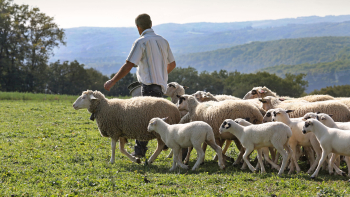This article is older and has been archived.
It remains accessible, but the information provided may be out of date or incorrect.
Defense and management organization
A first study on employment in SIQO [ODG].
In a context of food price inflation, a proliferation of labels, a sharp rise in societal expectations, and the promotion of food sovereignty, the question of the impact of SIQO production on local employment is increasingly important. INAO, in partnership with INRAe, has carried out the first comprehensive study on the subject.

Providing concrete figures
While the positive impact of SIQO on employment has already been explained in qualitative terms, few figures existed to date. To fill this gap, a research project was carried out in partnership with the INRAE. It is based on information from the 2020 agricultural census and the INAO's database of operators authorized to produce under SIQO. This first study aims to provide detailed and comprehensive figures on direct employment on farms engaged in SIQO production. It concerns all sectors, and offers a comparison with information on production that does not benefit from a SIQO. The study has three focuses:
- The quantified estimate of the volume of direct employment on farms producing under SIQO
- The comparison of the volume of employment between farms with and without SIQO
- The role of SIQO in maintaining employment.
Production under SIQO generates more jobs overall
In 2020, farms with SIQO (excluding Organic) account for almost 230,000 direct jobs full-time equivalent (FTE). The share of SIQO farms (excluding Organic) in total agricultural employment stands at 32.8%. This figure rises to 43% if organic farming is included
With SIQO production, the study shows a higher overall volume of employment per farm, particularly in the animal sectors. This "surplus of jobs" can be explained by the fact that processing activities are more frequent in all sectors. The econometric study, comparing farms "all other things being equal", found an average employment volume of 0.7 full-time equivalents (FTE) for SIQO farms. Certain provisions in the specifications for SIQO products may also explain this surplus of jobs in certain sectors:
- Limitations on mechanization (production stages carried out manually)
- Limitations on farm production,
- Obligation to produce in a limited geographical area...
The study also includes recommendations for future research, including improving the quality of initial data, analyzing outsourced employment on SIQO farms or studying the impacts of provisions in certain specifications. Indeed, the question of agricultural employment is at the heart of multiple issues, such as innovation in agriculture, remuneration of farmers, or generational renewal.
.All news dedicated to ODGs
The INAO's Délégation territoriale Occitanie is organizing another regional meeting with local ODGs on Wednesday, June...
News
News
INAO is launching a new campaign to promote the 5 official signs of quality and origin (SIQO) to the general public...
News

News
The Val-de-Loire territorial delegation of the INAO is organizing another regional meeting with local ODGs on Tuesday...
News

News
